Thursday, February 24. 2011
Wireless Stories: optimism and doubts about the future of public space
Via The Mobile City
-----
by Martijn de Waal
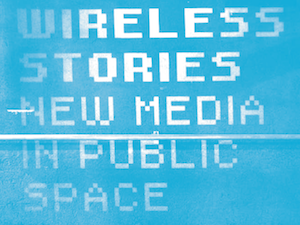
Last week the Dutch Mediafund and the Design department of the Sandberg Academy organized the conference Wireless Stories: new media in public space. The Mobile City was invited to provide the opening keynote (by Michiel de Lange) as well as a closing statement (yours truly), so here are my observations of the day:
What struck me most after a day’s worth of presentations of new media interventions – varying from a moodwall to complex multinlineair location based storytelling projects - was that the talks articulated both a sense of optimism as well as a sense of doubt.
There was a lot of optimism that new media would make urban public spaces more interesting, layering them with depth, connecting people, spark democratic debates, turn them into playgrounds and empower citizens.
Yet at the same time there were some doubts. Although the opportunities are there, many of the speakers were still not sure how exactly they are to be effectuated. How do we indeed engage people in public spaces with the help of these new technologies?
Optimism: enhancing public space with locative and wireless media
Let’s start with the optimist visions. During the day several visions of what public space is, which functions it fulfills, and what is problematic about it were addressed.
1. Public Space as a place for deliberate democracy
This is of course a vision that builds upon theories by the likes of Hannah Arendt and Jurgen Habermas, who have theorized public space as a meeting ground for citizens where they come together to discuss their common future.
At the conference Tobias Ebsen presented Climate on the Wall, an interactive mediafacade by the Digital Urban Living Lab (we have written about this project before) at Aarhus University. Climate on the Wall is based on the concept of ‘magnetic poetry’: text balloons with words are projected on a facade, and passers-by can drag the words in any order, forming poetic sentences, political statements or just nonsense.
The hope expressed in the project was that people would use the installation to make statements about the environment. However, that didnot always happen. People just started playing with it, or even using the installation in a subversive way. What the creators didnot forsee though is that debate did take place: not on the wall itself, but rather amongst the bystanders/ audience. The playful and sometimes subversive uses had turned their installation into a conversation piece.
2. Public Space as a theatre, as a stage for the representation of cultural identities and political movements
Various speakers at the conference alluded to the current events in Tunesia and Egypt, reflecting on the role of public space as a place for the representation of political movements. These physical and bodily mass events are now partially coordinated by the use of digital media in the form of social networks ans sms messages. Although in my opinion claims of a ‘Twitter revolution’, where the technology causes the revolts should be distrusted, there is no doubt an interesting dynamic going on between these media and the way collective political imaginations are shaped as well as the (organization of) physical movements through which these imaginations are articulated.
On a different but somewhat comparable plane, public space can also be understood as a site for cultural representation, where (sub)cultures proudly display themselves, (temporarily) claim a part of public space to assert their right to exist, or just to make it their own. At the conference the dance film Diamond Dancers bu Quirine Racke and Helena Muskens made me think of this particular approach of public space. The film is a flash mob performance of provincial line dancers who travel to amsterdam to stage a surprise performance on one of the main public squares.
3 Public space as a site for cultural experiences and exchanges
A number of speakers approached public space as a stage for cultural experiences. In these examples, wireless media are to enhance the experience of a particular place, for instance by showing historic layers, or connect places to personal stories, to make people aware of alternative points of view or just to tell an exciting story or engage people in a game.
Dick van Dijk of Waag Society showed their 7scenes platform – a tool for the annotation of maps and the authoring of location based stories and games. They are using this tool to develop an app for the Amsterdam museum – as part of an international trend sometimes called ‘museums without walls’. Earlier they also authored other locative experiences. For instance Madretsma.net is a route through Amsterdam commemorating the slavery trade. Here, the interface was much more low tech: at particular points in the city users could call a phone number and listen to a particular story connected to that place.
Michael Epstein of Untravel Media also showed a number of what he had called ‘terratives’ – narrative that are told on location. (see an earlier Mobile City report for a more in depth analysis of the genre). For instance, in Boston they created a project named Walking Cinema: Murder on Beacon Hill. This project took the form of a walk along a number of locations in Boston, where scenes (movie clips) from a 19th century murder mystery were played out on a smart phone.
These are not just geo-annotated movie clips. To draw the user in, some dramaturgic elements were added. First there was a narrator, that invited participants to follow in her footsteps, also turning the player into a character. Second, actual physical props played an important role and third, players / viewers also had to interact with real people in the actual surroundings. For instance one of the scenes took place in the lobby of a luxurious hotel and some employees there were involved in the story.
Martin Rieser showed The third woman a project that was even more complex in its story telling. Where Walking Cinema was a more or less lineair narrative that played out on location, the Third Woman added interactive elements, where participants could influence the mood of particular filmclips they were shown.
4 Feeling at home in Public Space
A fourth approach of wireless media I encountered was not so much connected to a particular understanding of public space, but rather trying to deal with one of its inherent problems. If public space is a place where we encounter strangers, who might also be different from ourselves, than for many this can also lead to a somewhat uncanny feeling. Especially at certain locations that are not lively public spaces but somewhat neglected passage ways, people can easily feel unsafe.
Can designers intervene with digital or wireless media to make citizens feel more at home in public space? For instance by using visualizations of harvested mobile phone or social network data that show collective rhythms of citizens?
In this category, Matthijs ten Berge showed his Moodwall – a beautiful light installation in a dark tunnel in de Bijlmer area of Amsterdam. Its interactive light patterns are to make passers-by feel more at home in these surroundings.
The doubts
I was (although not necessarily unpleasantly) surprised by all these optimist visions , since often in the general debate about the affordances of digital media in relation to public space dystopian scenario’s are evoked. Digital and locative media are after all not only media of connection, providing added layers of experience. They also have the affordance to turn the city into a panopticon and allow their users to retract in their safe, personal communication bubbles – turning public spaces into private experiences. These more critical points of view were sometimes mentioned, but not really addressed during the conference.
That is not to say that there were no doubts expressed. On the contrary, although speakers were overall enthusiastic about the opportunities of digital media, they also found that the actual implementation, scalability and engagement of users is hard to accomplish.
The technology is here: we can now tweet, geotag, program urban screens or use the private screens of the mobile phone. Yet the question remains: how to actually engineer an interesting experience, how to seduce people to actually interact with the content? This question is all the more relevant, since one of the characteristics of wireless media is that they often are invisible. So it is not only a matter of engaging people but also make them aware of the added layers etc. All of the projects shown at the conference had somehow struggled with these issues, and it is fair to say that this will also remain one of the most important questions in wireless storytelling in the near future.
Lessons Learned
With regard to the design of locative experiences, I took two important lessons from these examples. The first is – as Michael Epstein put it strikingly – ‘Matter is a test for our curiosity’, meaning that material artefacts in real space can draw people into the story. The tension in locative storytelling projects comes from actually drawing in objects, locations and people, making it tactical and physical. Especially the use of people can really make the experience much more appealing. Although this is also very hard to arrange, but it is worth to try to draw in local shopkeepers, hotel lobby attendants or others into the scenario. In effect, as a narrative discipline locative storytelling is probably closest to theatre – you need a strong dramaturgy, script, actors and perhaps a gameplay. This also can make it hard to scale locative productions or reenact them at other locations. (see our earlier article Some notes on the design of pervasive games for more thoughts about this)
A second lesson, with regard to locative projects that try to engage people into discussions or exchange is to not overdetermine the design. Make it a playful design to draw people in, but also leave some room for people to appropriate it, to play with the rules of the game. Sometimes its more useful to design a conversation piece than wanting to direct the conversation itself.
Thursday, February 17. 2011
114.psd Type [Mac]
Personal comment:
The resurgence of the old, useless and overwhelming "pop-up" style (even though this consists in windows opening) that we somehow miss since Jodi went "quiet"!
Interview with Zach Gage
Via Rhizome
-----
By Joshua Noble on Wednesday Feb 16th, 2011
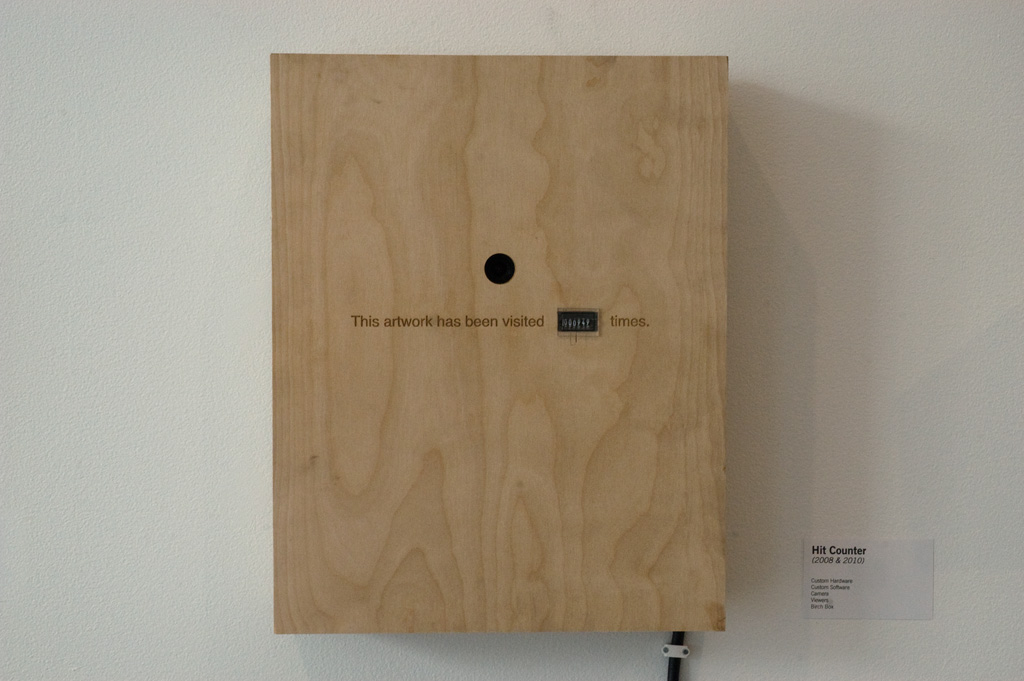
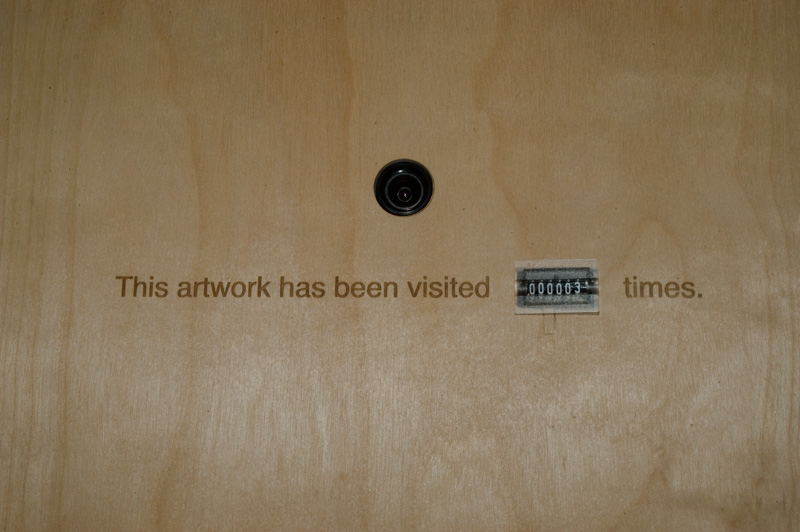
”Between the ubiquity of Internet access and the fact that data has no objective tangible form, internet users have long been plagued with the problem of determining the value of the content they are ingesting.” - Zach Gage
Seen in a certain light, the core of technological mediation has always been presence, absence, and distance. Writing established the possibility of presence during absence, arrows and gunpowder created force at a distance, the telephone created presence at distance, and network computing fundamentally altered the nature of being “absent” or “present” to an almost unrecognizable degree. No small surprise then that contemporary “media art” practice seems to return to these questions as being fundamental investigations. The question of what “presence” could be was explored and expanded throughout the dawn of the internet age: Ken Goldberg’s TeleGarden, Eduardo Kac’s concept of Telepresence, Sven Bauer, Heath Bunting, to grab but a few names. Each possibility of a new field of entry, a new method of retaining, mapping, signifying, and storing, opened a rich possibility. Now fast forward fifteen years and ever-presence is exhausting, a nuisance that forever asks and returns only the vague rewards of a slot-machine and seems to fray our sense of privacy, meaningfulness, boundary, and perhaps even self. So how then to artistically respond to this? Exhibit: Zach Gage.
His works are at once sophisticated and remarkably simple, both in presentation and concept in a way that might be recognizable to Joseph Kosuth or Lawrence Weiner, rather than the Baroque conceptual complexity on display in much media art in the 90’s. Computational art or interactive art has generally taken two tacks in dealing with the complexities of technology itself -- unabashed celebration and dystopian anxiety. At either extreme is the grandiose challenge of prediction: this possible or actual relationship to technology will lead to this consequence or benefit. The reality of living with technology is not only simpler but is often much more banal. The most refreshing element of Gage’s work is how it asks us to do nothing more than consider what is. Working with the instantly familiar data sources, Twitter, Google, chat servers, at their simplest, his work often resembles a refreshingly sharp Occam’s Razor taken to notions of the richness of data and networked experience.
His thesis show, “Data”, is an extremely visually and thematically understated installation comprised of several pieces. Small wooden boxes, wires, and simple placards: none of the forced estrangement, hand-waving interactivity, or spectacle that one associates with computer arts. In particular, one of the pieces in the show, Hit Counter stands out as particularly poignant: a simple measurement of the number of times someone has stood in front of the work. Face recognition software is used to keep track of the actual viewers and the number is displayed on an old-fashioned mechanical counter. Gage states “with no other means to judge it, Hit Counter demands to be assigned a worth based solely on its popularity.” But then, Hit Counter is not merely asking to be judged on popularity. It, like so many things in our media culture, is popularity. It’s nothing else, and it’s not any kind of popularity other than actual physical presence; a sharp reminder of the relationship between presence and popularity. No matter how many people hear about it online, what is written about it, what buzz is generated, it’s a simple box that generates a number based on how many unique people have stood in front of it. I’m not sure whether I’m more struck by the concept itself or that I am so struck by the concept as an ontological exercise: something that simply is actual physical presence. It’s odd that it is odd and, in that oddness, it is a stance closer to Sol Lewitt “Sentences on Conceptual Art” than many other re-interpretations of his legacy and ideas. Reformulating the simplest data object imaginable in the simplest terms has a markedly clarifying effect and in clarification is a rare kind of beauty. I spoke with Zach Gage about Hit Counter, as well as his larger practice.
More about it HERE.
Tuesday, February 15. 2011
More on Online Museums
Via Michelle Kasprzak via @chrstphggnrd
-----
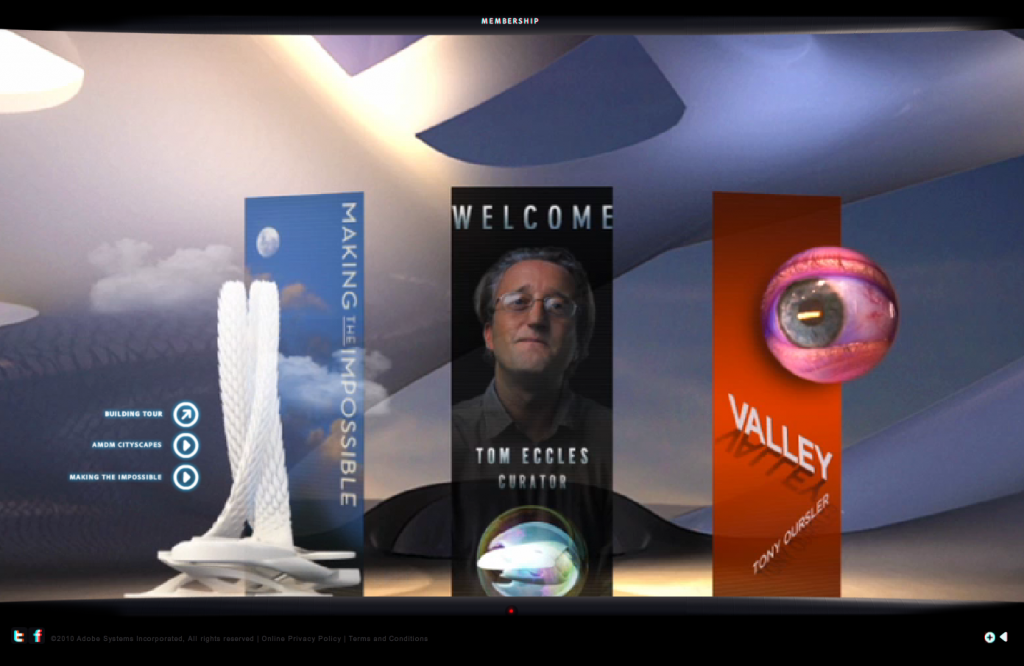
Adobe Museum of Digital Media
Rhizome recently published a piece I wrote entitled “Moving the Museum Online“. The piece was a critique of the Adobe Museum of Digital Media, and also served as a platform to discuss the concept of online museums, and highlight a few examples that I thought were particularly noteworthy, including the Virtual Museums of Canada, the Museum of Online Museums, the MINI Museum, and Google’s recent Art Project.
In both the comments section on the piece and through Twitter comments and emails, people have kindly been pointing out other examples of online museums that are of interest. Here are three that stood out:
Guggenheim Virtual Museum (vintage: 2001): “The Solomon R. Guggenheim Museum has commissioned the New York firm Asymptote Architects to design and implement a new Guggenheim Museum in cyberspace. This is the first phase of a three-year initiative to construct an entirely new museum facility. The structure will be an ongoing work in process, with new sections added as older sections are renovated. The project will consist of navigable three-dimensional spatial entities accessible on the Internet as well as real-time interactive components installed at the various Guggenheim locations.
As envisioned by Asymptote and the Guggenheim, the Guggenheim Virtual Museum will emerge from the fusion of information space, art, commerce, and architecture to become the first important virtual building of the 21st century.”
muSIEum (vintage: unknown, pre-2009): This online reconfiguration of four Viennese museums “…displaying gender, criticizing the conventional hegemonial ordering of things”, and “bringing out the different storylines that could (have) been told with the same objects from a standpoint counter-acting the cultural hegemony of the patriarchal view”. An intervention that is needed not just in Vienna, I’d wager. In German only.
MIX-m (vintage: 2001 – 2003): “MIX-m stands for MIXed-museum. It is a contemporary art museum that exists both in physical and digital spaces, in localized and networked environments. MIX-m plays with the dimensions of its architecture: a mix between a real museum space (here, the Bâtiment d’Art Contemporain in Geneva) (1:1), a digital space based on the dimensions of its host (1:x) and a model of this game-like environment (1:50). MIX-m has the ability to re-locate itself into this existing exhibition environment, transforming, mixing and extending it into new territories. It offers therefore a variable environment to create art installations. These works, commissioned by MIX-m, can now define and modulate their presence inside an extended space spectrum: physical-digital, real-simulated, localized-networked.”
Read Moving the Museum Online on Rhizome, and join the discussion there or send me a Tweet (@mkasprzak) with your own suggestions of other virtual museum projects that exemplify either the lack in current physical museums (as muSIEum does), an additionality (as with the Guggenheim), or a hybrid space (MIX-m).
Related Links:
Tuesday, February 01. 2011
Free Encyclopedia of Interactive Design, Usability and User Experience
-----
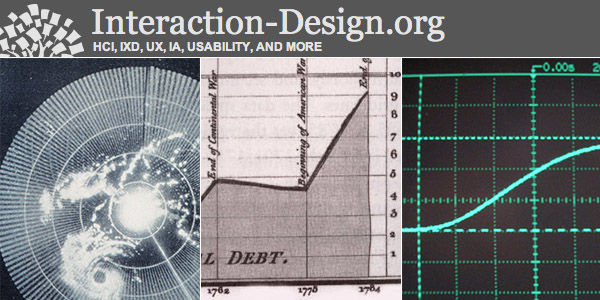
The recently released Free Encyclopedia of Interactive Design, Usability and User Experience [interaction-design.org] has been developed under the manifesto of "Democratization of Knowledge", as it aims for people from all the far corners of the world to get free access to world-class educational materials. It also deliberately takes the opposite approach of Wikipedia or other crowd-sourcing initiatives, as all entries are written by leading figures who either invented or contributed significantly to a particular topic.
The website contains various topics that relate to data visualization. For instance, one can enjoy an elaborate introduction on visual representation by Alan Blackwell (with additional commentaries by some renowned professors like Ben Shneiderman, Clive Richards and Brad A. Myers), or more specifically dive into the topic of Data Visualization for Human Perception by Stephen Few (including a blog shortlist on which I will refrain commenting).
Be sure to check out the other topics that have been covered in a chapter, and might well be interesting to you.
fabric | rblg
This blog is the survey website of fabric | ch - studio for architecture, interaction and research.
We curate and reblog articles, researches, writings, exhibitions and projects that we notice and find interesting during our everyday practice and readings.
Most articles concern the intertwined fields of architecture, territory, art, interaction design, thinking and science. From time to time, we also publish documentation about our own work and research, immersed among these related resources and inspirations.
This website is used by fabric | ch as archive, references and resources. It is shared with all those interested in the same topics as we are, in the hope that they will also find valuable references and content in it.
Quicksearch
Categories
Calendar
|
|
February '11 |
|
||||
| Mon | Tue | Wed | Thu | Fri | Sat | Sun |
| 1 | 2 | 3 | 4 | 5 | 6 | |
| 7 | 8 | 9 | 10 | 11 | 12 | 13 |
| 14 | 15 | 16 | 17 | 18 | 19 | 20 |
| 21 | 22 | 23 | 24 | 25 | 26 | 27 |
| 28 | ||||||
